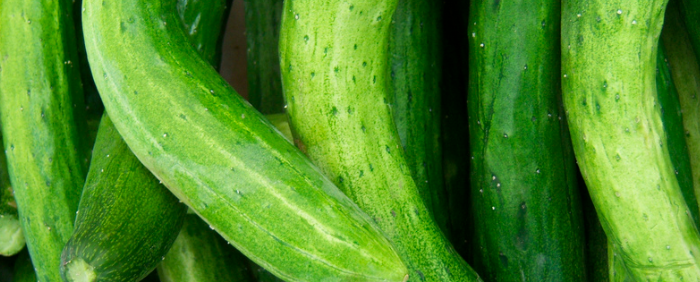
We may not have invented the cucumber arching machine – something as useful and legendary as the banana bending machine – but we still have culture tips to give on the subject.
Identity card of Cucumis sativus.
The cucumber, Cucumis sativus, is a Cucurbitaceae of Indian origin . Immediately this information puts you smart in the ear! You say India = warm and sunny climate , is not it? So cucumbers are cultivated here only in the spring-summer period , because they can not stand the cold and need light. For the record, cucumbers were acclimatized in ancient Egypt before being adopted by the Greeks and Romans – so it is often perceived as a Mediterranean vegetable, and most varieties are rather adapted to this climate .
Cucumber or pickle?
The cucumbers and pickles are the same plant ! The only difference is that pickles very young, every day, and they are quickly put in vinegar 😉 To obtain cucumber, it takes 3-4 months of cultivation, from April to July.
Of course, there are varieties more suitable for producing cucumbers, and others for gherkins.
Culture Tip Number 1.
Cucurbitaceae are known to tolerate fresh organic fertilizers – like a young compost. The gardener doing the test will actually notice a rapid development of his plants – even planted directly in a pile of compost in training. it’s hot and rich, it works alone.
The innocent gardener …
What does not see at first sight our brave gardener experimenter is that it will form an excess of nitrogen in the body of the plant , which strongly attracts our friends aphids . And who says aphids, then says fumagine – the winning duo!
So let’s save the chore of aphid control methods, and go directly to prevention: a little mature compost at the foot of the plant is enough , no need for a wheelbarrow!
Tip of culture number 2.
Cucumber is not a plant that developed in India during the monsoon: he does not like to have wet leaves , it favors powdery mildew . So do not water it at night by wetting the leaves, but mulch it a lot and water your feet if necessary, in the morning. Personally, we do not water the cucumbers until the formation of the fruits – and from there, sometimes, if it is too dry, we add a little water to avoid cucumbers too bitter…
Culture Tip Number 3.
Okay, that’s not really a secret, but like cucumbers have the nasty habit of crawling around, you can palisser yours to save space and facilitate the collection:
Cucumber, a particular fertilization method.
The cucumbers bear on the same foot male flowers – at the end of a long peduncle – and female flowers whose ovum swollen under the corolla is clearly visible. Male flowers often arrive in advance. To succeed in obtaining fruits, the flowers must be pollinated . If you notice that your cucumbers are not forming and the flowers abort, you may miss pollinators … In this case, do the pollination yourself, simply with a cotton swab or a brush rubbing the flowers one after the other. Simple, no?
NB sometimes the flowers abort just because the plant is still too small to feed them.
To recover seeds?
If you use reproducible old varieties , you probably want to reproduce these, for next year! Yes but beware, cucurbits have the nasty habit of breeding with neighbors, without asking your opinion – and sometimes the result is unexpected!
To be certain of producing seeds that do not hybridize with other cucumbers or cousins, close the female flowers as soon as they are formed – for example with a clothespin . Then fertilize them with the pollen of a male flower of the same foot, and replace the clothespin until the fruit is formed.
Find the right variety.
Hard to find the variety that will please your climate and your soil … Because unless the seed producer is your “neighbor”, there is no certainty before trying. The first year, try 3 different varieties without letting them hybridize .
If you are really struggling to isolate the variety that will please you at home, try to recover your own seeds – provided you are careful not to hybridize with other Cucurbitaceae, as explained just above. The following year, you will have more acclimatized feet.